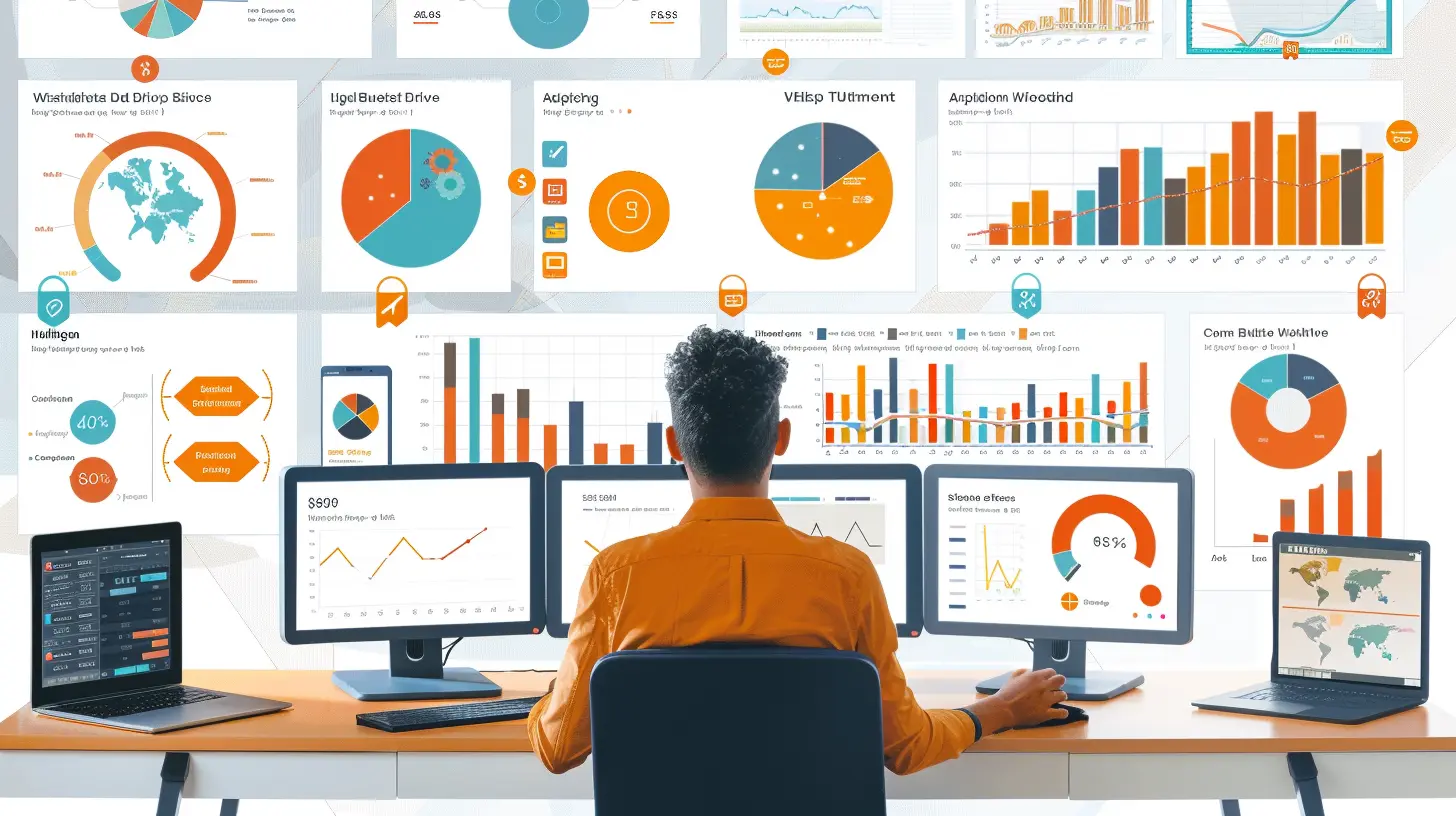Automating Data Analysis to Drive Better Business Decisions
17 June 2025
Ever feel like you're drowning in data, but still not quite sure what it's trying to tell you? You’re not alone! In today’s digital-first world, businesses generate a mountain of data every single day — from customer interactions and sales trends to supply chain stats and social media feedback. But here’s the kicker: having a ton of data isn’t the same as actually using it to make smarter moves. That’s where the magic of automating data analysis comes in.
In this lively read, we're going to break down how automating your data analysis can skyrocket your decision-making game. So buckle up, grab a cup of coffee, and let’s dive into the wonderful world of automation, analytics, and aha-moments!
Why Data Is the New Gold (But Only If You Use It Right)
Let’s be real for a second. Data is everywhere. But too much of it can feel like you’re trying to drink from a firehose. The problem isn’t about collecting data — it’s about making sense of it. You might have spreadsheets stacked to the ceiling, but unless you’re pulling actionable insights from them, you’re just... hoarding.Businesses that know how to sift through this data goldmine and extract the shiny nuggets are the ones making better, faster, and bolder decisions.
So, What Is Automated Data Analysis Anyway?
Picture this: You’ve got a super smart robot assistant who never gets tired, never gets distracted, and doesn’t need coffee breaks. This assistant goes through all your data — sales figures, customer behavior, social media insights — and tells you exactly what’s working, what’s not, and what to do next.That’s automated data analysis in a nutshell.
In more technical terms? It’s the use of software tools and algorithms (like AI and machine learning) to examine large datasets automatically, identify patterns, highlight trends, and provide actionable insights — all without manual number-crunching.
Neat, right?
The Perks of Letting Data Do the Talking (Automatically)
So why should you care about automating your data analysis? Oh, let me count the ways:1. Speed: Bye-Bye, Bottlenecks!
Manually analyzing data is like running a marathon in flip-flops. Slow, painful, and probably not very effective. Automation turns weeks of work into minutes.2. Accuracy: No More Guesswork
Human error is real. Even the most brilliant analyst can misread a spreadsheet. Automated systems are built to follow rules and don’t make mistakes (as long as they’re set up right).3. Insights on Demand
Imagine asking, “What were our top-selling products last quarter?” and getting an instant answer. Better yet, imagine getting alerted before a product starts slipping in sales. Automation reacts in real-time.4. Scalability: Go Big or Go Bigger
As your business grows, so does your data. Automated analysis tools can handle growth like a champ, analyzing millions of data points without breaking a sweat.5. Smarter Decisions = Better Business
At the end of the day, it’s about making choices that lead to growth, efficiency, and happier customers. Automation keeps your finger on the pulse so you’re never making decisions in the dark.
Common Business Areas Where Automation Cleans Up Nicely
Automation isn’t just for tech giants or data wizards. Businesses of all sizes can benefit, especially in these juicy areas:📈 Marketing Campaigns
Want to know which ad grabbed attention… and which one flopped? Automated tools analyze engagement, click-throughs, conversion rates, and customer demographics in real time.🛒 Sales Tracking
Sales data tells you what customers are buying, how often, and at what price point. Automation spots trends and forecasts future sales like a crystal ball.🤝 Customer Support
Analyzing feedback, complaints, and support tickets automatically can show you where customers are struggling — and how to fix it (fast!).🚚 Inventory Management
Nobody likes being out of stock — or worse, overstocked. Automation checks real-time data to optimize stock levels so you’re always just right.📊 Financial Reporting
Balance sheets, cash flows, budgets — they all benefit from automation. Real-time dashboards help finance teams stay on top of every dime.Let’s Talk Tools: The Cool Tech Behind the Curtain
Now, you might be wondering: “Okay, but how does all this actually happen?” Let’s peek behind the curtain at some of the rockstar tools powering automated data analysis:📌 Excel with Power Query
Old faithful Excel can do more than you think when paired with Power Query and automation tools. It’s like giving your spreadsheet superpowers.📌 Google Data Studio
Great for creating stunning, live-update dashboards that non-tech folks can actually understand.📌 Tableau & Power BI
These visualization tools turn complex data into beautiful graphs and charts — perfect for storytelling with numbers.📌 Machine Learning Models
ML algorithms can predict future trends based on historical data. It’s like having a mini fortune teller in your system.📌 Python & R
These are programming languages loved by data scientists. With the right scripts, they can automatically clean, organize, and analyze mountains of data.How to Get Started (Without Feeling Overwhelmed)
Starting small is the name of the game. You don’t have to automate every single thing at once. Here's a simple roadmap to get rolling:Step 1: Identify Your Goals
What decision are you trying to improve? Is it sales forecasting? Customer satisfaction? Start with one specific pain point.Step 2: Gather Your Data
Find out where your data lives. CRMs, spreadsheets, social media, emails — you name it. Bring it all together in one place.Step 3: Choose the Right Tool
Pick a tool that fits your tech skills and business needs. No need to go overboard on features you’ll never use.Step 4: Set Up Your Automation
Plug your data into the tool, set up the rules, and let it do its thing. Most platforms offer templates or guides to help you along.Step 5: Keep Tweaking
Like any superhero, your automated system needs training. Check accuracy, adjust when needed, and keep improving as you go.Real-World Example: How Automation Transformed a Small Biz
Let me tell you a quick story. A friend of mine runs a boutique e-commerce shop. She used to spend hours every Sunday analyzing sales, tracking customer emails, and trying to figure out what to restock.One day, she set up an automated dashboard using Google Sheets connected to Shopify and Mailchimp. Now, she gets an email every Monday morning with a summary of top-selling items, low inventory alerts, and customer engagement data.
Her Sunday nights are back. Her reorders are smarter. And best of all? Sales went up 20% just because she started making decisions based on real-time data.
Battle of the Bots: Is Automation Replacing Humans?
Whoa there — let's clear the air. Automation isn’t about replacing people; it’s about empowering them. Think of it like cruise control in your car. It handles the repetitive stuff so you can focus on the big-picture goals.Data analysts, marketers, and business owners are still very much needed — especially for interpreting results, asking new questions, and driving strategy. Automation just gets you there faster.
The Future Looks Bright (and Automated!)
As AI, machine learning, and predictive analytics get more advanced, the possibilities are endless. We’re talking about tools that can tell you:- Which customers are about to churn
- Which products are about to trend
- When your next supply chain hiccup might hit
It’s not science fiction. It’s happening now.
And the best part? These tools are becoming more accessible and affordable every day, meaning even small businesses can harness the power of data without needing a full-time team of analysts.
Final Thoughts: Embrace the (Data-Driven) Joyride 🚀
So, where does that leave us? Automated data analysis isn’t just a fancy tech buzzword — it’s a genuine game-changer. It helps you cut through the noise, find meaningful insights, and make smarter choices that drive results.And hey, who wouldn’t want to free up more time, avoid data overwhelm, and make decisions with confidence?
Whether you're a small business owner, team leader, or curious entrepreneur, embracing automated data analysis could be the best decision you make this year.
Let the data do the heavy lifting. You’ve got big ideas to act on.
all images in this post were generated using AI tools
Category:
Business AutomationAuthor:

Miley Velez
Discussion
rate this article
2 comments
Mackenzie Warren
Automating data analysis? Finally, a way to make decisions without consulting my coffee mug for guidance! Cheers to tech saving the day!
June 21, 2025 at 3:37 AM

Miley Velez
Glad you enjoyed the article! Cheers to leveraging tech for smarter decision-making!
Alvin McGlynn
Great insights on automation! It’s fascinating how data analysis can significantly enhance decision-making in business.
June 18, 2025 at 4:43 AM

Miley Velez
Thank you! I'm glad you found the insights valuable. Automation truly transforms how we leverage data for decision-making.


